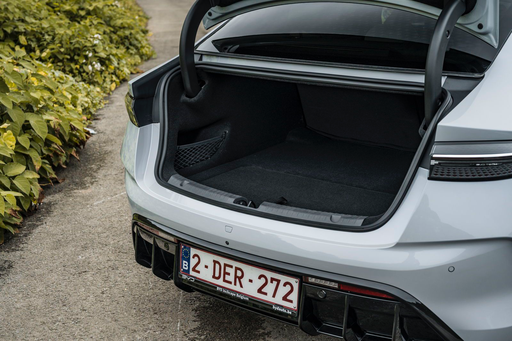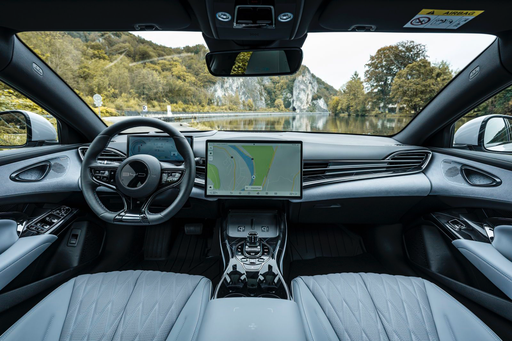BYD Seal vs Volvo EX30 - Differences and prices compared
Compare performance (530 HP vs 428 HP), boot space and price (40300 £ vs 33000 £) at a glance. Find out which car is the better choice for you – BYD Seal or Volvo EX30?
Costs and Efficiency:
Price and efficiency are often the first things buyers look at. Here it becomes clear which model has the long-term edge – whether at the pump, the plug, or in purchase price.
Volvo EX30 has a clearly perceptible advantage in terms of price – it starts at 33000 £, while the BYD Seal costs 40300 £. That’s a price difference of around 7286 £.
In terms of energy consumption, the advantage goes to the BYD Seal: with 15.40 kWh per 100 km, it’s slightly more efficient than the Volvo EX30 with 17 kWh. That’s a difference of about 1.60 kWh.
As for range, the BYD Seal performs to a small extent better – achieving up to 570 km, about 94 km more than the Volvo EX30.
Engine and Performance:
Power, torque and acceleration say a lot about how a car feels on the road. This is where you see which model delivers more driving dynamics.
When it comes to engine power, the BYD Seal has a a bit edge – offering 530 HP compared to 428 HP. That’s roughly 102 HP more horsepower.
In acceleration from 0 to 100 km/h, the Volvo EX30 is hardly perceptible quicker – completing the sprint in 3.60 s, while the BYD Seal takes 3.80 s. That’s about 0.20 s faster.
There’s no difference in top speed – both reach 180 km/h.
There’s also a difference in torque: BYD Seal pulls to a small extent stronger with 670 Nm compared to 543 Nm. That’s about 127 Nm difference.
Space and Everyday Use:
Whether family car or daily driver – which one offers more room, flexibility and comfort?
Both vehicles offer seating for 5 people.
In curb weight, Volvo EX30 is slight lighter – 1840 kg compared to 1907 kg. The difference is around 67 kg.
In terms of boot space, the BYD Seal offers evident more room – 400 L compared to 318 L. That’s a difference of about 82 L.
When it comes to payload, BYD Seal a bit takes the win – 473 kg compared to 390 kg. That’s a difference of about 83 kg.
Who comes out on top?
Overall, the BYD Seal shows itself to be is largely superior and secures the title of DriveDuel Champion.
It convinces with the more balanced overall package and proves to be the more versatile choice for everyday use.

BYD Seal
Costs and Consumption
View detailed analysis
Engine and Performance
View detailed analysis
Dimensions and Body
View detailed analysis
BYD Seal
The BYD Seal is a sleek electric fastback that punches above its class with sporty looks and a surprisingly premium cabin, offering a very modern alternative for buyers who want style and substance without the badge snobbery. On the road it feels composed and eager, packed with tech and everyday practicality—ideal for shoppers after eco-friendly performance with a cheeky wink.
details




Volvo EX30
The Volvo EX30 arrives as a compact electric with crisp Scandinavian design and a cheeky personality, proving you can be serious about safety and still enjoy a grin on your commute. Its cabin is cleverly packaged and delightfully easy to live with, offering smart tech and practical touches that make it feel like a grown-up's city car with a sense of fun.
details





|

|
|
|
|
Costs and Consumption |
|
|---|---|
|
Price
40300 - 45400 £
|
Price
33000 - 49100 £
|
|
Consumption L/100km
-
|
Consumption L/100km
-
|
|
Consumption kWh/100km
15.4 - 18.2 kWh
|
Consumption kWh/100km
17 - 18.7 kWh
|
|
Electric Range
460 - 570 km
|
Electric Range
339 - 476 km
|
|
Battery Capacity
-
|
Battery Capacity
49 - 65 kWh
|
|
co2
0 g/km
|
co2
0 g/km
|
|
Fuel tank capacity
-
|
Fuel tank capacity
-
|
Dimensions and Body |
|
|---|---|
|
Body Type
Sedan
|
Body Type
SUV
|
|
Seats
5
|
Seats
5
|
|
Doors
4
|
Doors
5
|
|
Curb weight
1907 - 2185 kg
|
Curb weight
1840 - 1960 kg
|
|
Trunk capacity
400 L
|
Trunk capacity
318 L
|
|
Length
4800 mm
|
Length
4233 mm
|
|
Width
1875 mm
|
Width
1838 mm
|
|
Height
1460 mm
|
Height
1550 - 1567 mm
|
|
Max trunk capacity
-
|
Max trunk capacity
1000 L
|
|
Payload
446 - 473 kg
|
Payload
370 - 390 kg
|
Engine and Performance |
|
|---|---|
|
Engine Type
Electric
|
Engine Type
Electric
|
|
Transmission
Automatic
|
Transmission
Automatic
|
|
Transmission Detail
Reduction Gearbox
|
Transmission Detail
Reduction Gearbox
|
|
Drive Type
Rear-Wheel Drive, All-Wheel Drive
|
Drive Type
Rear-Wheel Drive, All-Wheel Drive
|
|
Power HP
231 - 530 HP
|
Power HP
272 - 428 HP
|
|
Acceleration 0-100km/h
3.8 - 7.5 s
|
Acceleration 0-100km/h
3.6 - 5.7 s
|
|
Max Speed
180 km/h
|
Max Speed
180 km/h
|
|
Torque
360 - 670 Nm
|
Torque
343 - 543 Nm
|
|
Number of Cylinders
-
|
Number of Cylinders
-
|
|
Power kW
170 - 390 kW
|
Power kW
200 - 315 kW
|
|
Engine capacity
-
|
Engine capacity
-
|
General |
|
|---|---|
|
Model Year
2023 - 2025
|
Model Year
2024 - 2025
|
|
CO2 Efficiency Class
A
|
CO2 Efficiency Class
A
|
|
Brand
BYD
|
Brand
Volvo
|
What drive types are available for the BYD Seal?
The BYD Seal is available as Rear-Wheel Drive or All-Wheel Drive.
The prices and data displayed are estimates based on German list prices and may vary by country. This information is not legally binding.
